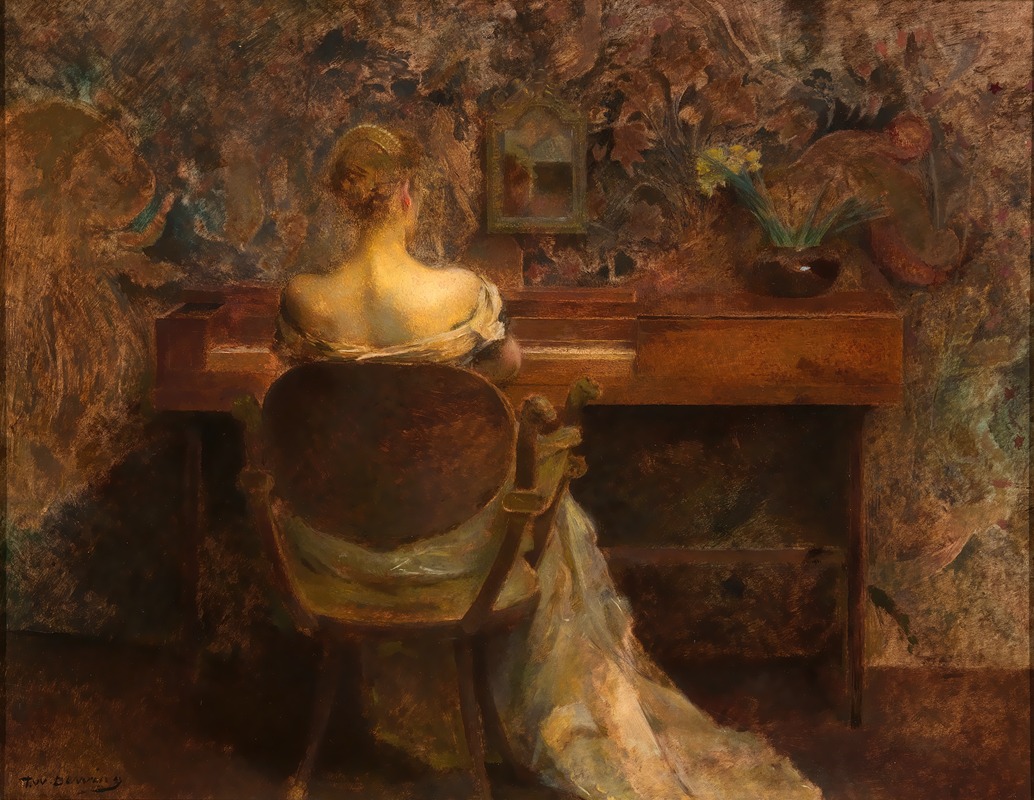
The Spinet
A hand-painted replica of Thomas Wilmer Dewing’s masterpiece The Spinet, meticulously crafted by professional artists to capture the true essence of the original. Each piece is created with museum-quality canvas and rare mineral pigments, carefully painted by experienced artists with delicate brushstrokes and rich, layered colors to perfectly recreate the texture of the original artwork. Unlike machine-printed reproductions, this hand-painted version brings the painting to life, infused with the artist’s emotions and skill in every stroke. Whether for personal collection or home decoration, it instantly elevates the artistic atmosphere of any space.
Thomas Wilmer Dewing's The Spinet is a notable painting created in 1902 by the American artist, who is widely recognized for his contributions to the Tonalist movement. Dewing's works often focus on refined, introspective female figures set against minimalistic and atmospheric backgrounds, and The Spinet is a quintessential example of his style.
The painting depicts a serene interior scene featuring a single female figure seated at a spinet, a type of small keyboard instrument popular in the 17th and 18th centuries. The woman, dressed in a flowing, elegant gown, is portrayed in profile as she appears to be playing or preparing to play the instrument. The composition is characterized by its soft, muted color palette, with shades of green, gray, and gold dominating the canvas. This restrained use of color enhances the painting's tranquil and meditative mood, a hallmark of Dewing's work.
Dewing's approach to composition in The Spinet reflects his interest in creating a sense of harmony and balance. The placement of the figure and the spinet within the sparse interior emphasizes simplicity and elegance. The background is deliberately understated, with only subtle hints of architectural details, allowing the viewer's focus to remain on the central figure and her contemplative activity. This minimalist aesthetic aligns with the Tonalist movement, which sought to evoke mood and atmosphere rather than focus on detailed realism.
The painting also reflects Dewing's fascination with music as a theme, which recurs in several of his works. Music, for Dewing, often served as a metaphor for refinement, culture, and the inner life of his subjects. By incorporating the spinet, an instrument associated with historical elegance, Dewing reinforces the timeless and introspective quality of the scene.
The Spinet is part of the collection of the Smithsonian American Art Museum in Washington, D.C. It is considered an important example of Dewing's ability to merge the aesthetic ideals of Tonalism with his own unique vision of feminine grace and introspection. The painting continues to be admired for its subtle beauty and its ability to evoke a quiet, contemplative atmosphere.
This work exemplifies Dewing's mastery of creating intimate, poetic scenes that invite viewers to reflect on the interplay between art, music, and emotion.


















